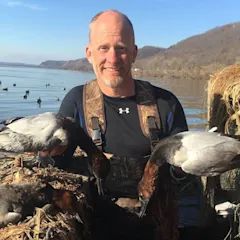Turkey hunters from coast to coast have come to embrace a new craze: hunting public land for spring gobblers.
That’s no joke. Hunting public property has become cool these past few years, thanks in part to state-hopping sportsmen who have chronicled their adventures in places that everyone can hunt. However, those folks would also tell you that chasing turkeys on public dirt often requires a different mindset and some innovative approaches.
With everyman’s land across the country getting more hunting pressure every spring, we tapped the minds of three experienced hunters to get their advice on public turkeys. Some of their opinions might surprise you. But first some generalities.
Why Hunting Turkeys on Public Land is Harder Than on Private
Full disclosure—Experts agree that turkeys on public ground are generally tougher to kill than their private-land cousins. But that’s not necessarily because of where they live.
“A public-land turkey, of course, doesn’t know that private land exists,” says Dave Owens, of Cedartown, Georgia. Owens has taken a U.S. Super Slam (shooting a bird in each of the 49 states that have seasons) and chronicles his public-land obsession—12 to 14 states per year—on his wildly popular online Pinhoti Project videos. He has chased turkeys on public land in all but maybe five states and prefers it to hunting private land.
“They’re going to act and conduct themselves in the same way,” he says. “In my opinion, turkeys just condition themselves to negative interaction. If they repeatedly encounter something dangerous, they avoid it.”
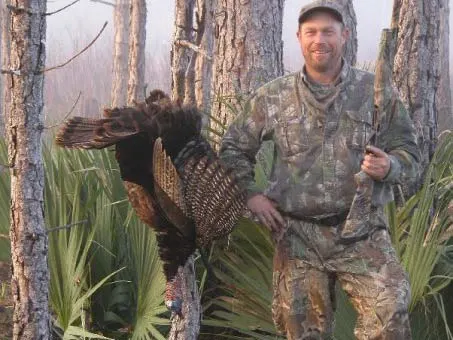
Tom “Doc” Weddle, of Bloomington, Indiana, agrees. He’s taken 37 Grand Slams (one of each of the four most common United States subspecies) and three U.S. Super Slams. Most of his turkeys were taken on public ground.
“I don’t really see any difference in public-land turkeys versus private-land birds, just as I see little difference in how the various subspecies act,” says Weddle, who has authored two turkey hunting books. “A turkey is a turkey, no matter where you find him. He still behaves like a turkey and does turkey things. However, how much pressure that turkey experiences and how many times he’s been boogered by someone bumping him can make a huge difference in his everyday behavior and wariness.”
Owens pointed out that turkeys on heavily-hunted private properties can become increasingly wary and difficult to hunt. But birds on lightly-hunted public ground—large tracts in the West, for example—often behave like turkeys in relatively unpressured spots.
“The biggest difference between public versus private is simply the number of birds found on a given piece of property,” says Weddle. “Good private ground will consistently have more turkeys on it than good public ground. And generally, the private property will have far fewer hunters to compete against. What this means is that you’re far more likely on public land to have someone else mess up your chances of killing a bird that’s working to your call. Public-land hunting isn’t easy, and it’s often frustrating. Further, the greatest public grounds I’ve ever hunted pale in comparison to the greatest of private grounds. This is simply because the private holdings are actively and consciously managed for turkeys and other game animals.”
That prompts an obvious question: What’s the best approach for hunting pressured public turkeys?

How to Hunt Turkeys on Public Land
Most public-land veterans agree that avoiding human interference and finding relatively lightly hunted areas boosts success considerably.
“I’m the first one back there—as far in as I can get,” says Jeff Budz, of Okeechobee, Florida, owner of Tag It Worldwide guide service. He’s taken a U.S. Super Slam and 106 Grand Slams, the most in history. Many of those turkeys came from public land. He strives to beat the competition by hunting when other folks can’t—often Wednesdays through Fridays—and going where they won’t, by traversing long distances or identifying overlooked tracts.
“It’s textbook stuff,” says Budz. “Don’t hunt next to the road. Don’t be one of these typical knuckleheads. They won’t even shut their engines or the radio off, and then they’ll hoot or crow call and then drive off. I’ve watched birds in those situations just sort of hunker down for a second, and when they hear the motor go away, they resume their normal activity.”
Owens eschews areas with easy access, knowing other hunters will likely use them. He seeks spots other people will probably avoid or even asks private landowners if he can cross through their property to access public land.
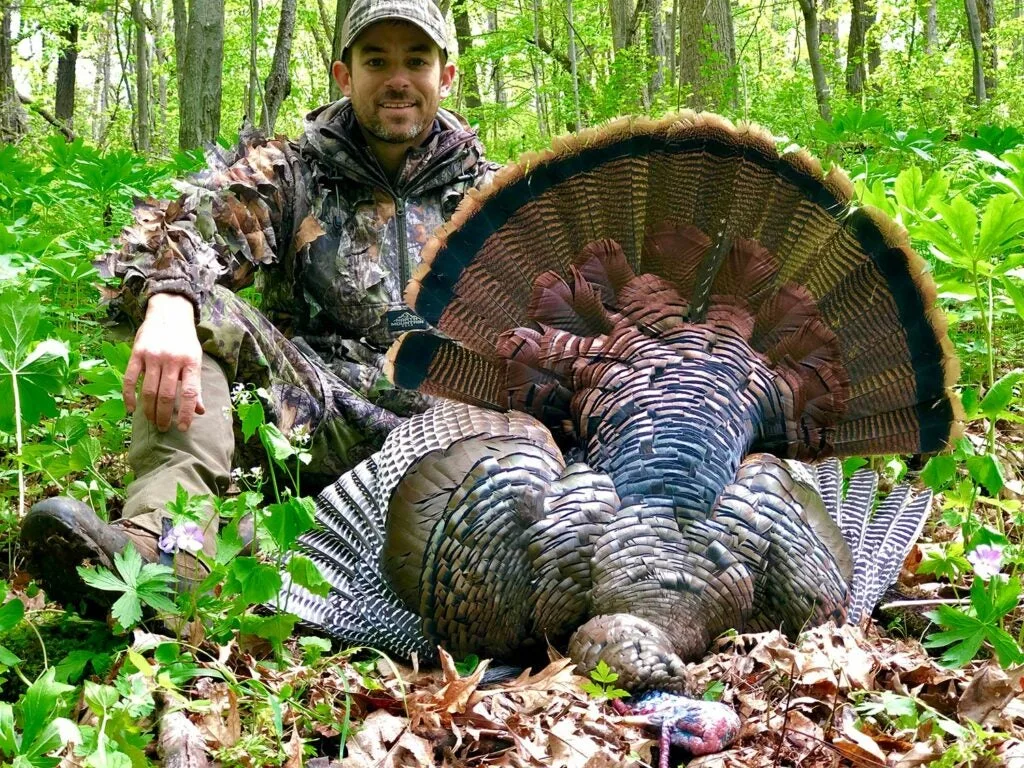
“I’m not afraid to knock on a door,” he says. “Folks often don’t mind you crossing their property as long as you’re not hunting their property.” Weddle takes a careful approach in the woods, striving to minimize his impact and avoid bumping birds.
“I’m much more cautious when hunting public property because I can’t risk messing up what few opportunities I might get to kill a bird there,” he says. “However, at the same time, I tend to cover more ground in trying to initially find those birds. As I said, there are fewer turkeys on public land, and as a traveling hunter with limited time, I can’t afford to waste any of it hunting where the turkeys ain’t. Hence, I expend much more energy and effort looking for turkeys or scouting to find sign of their presence.”
No matter where he hunts—unpressured spots or hard-hunted areas—Owens arrives well before daylight and gets in position to hear turkeys and have his calling be heard when birds begin gobbling.
“I always try to put myself where I can basically hunt with my ears and cover as much ground as possible in the most efficient manner, typically using spine ridges or logging roads that make navigating through the timber easy, or maybe following a creek bottom,” Owens says. “Put your ears on areas turkeys would be. Try to cover a lot of ground during that 30- to 40-minute window when the turkeys first start gobbling before they fly down and the gobbling might cease. I try to maximize my listening during that magic moment.”
And when he starts calling, Owens—the 2018 National Wild Turkey Federation Grand National Calling Contest Senior champion—uses a consistent, straightforward strategy.
“I don’t do anything different,” he says. “I approach private and public turkeys exactly the same. You’ll hear a lot of people talk about how you have to call less or be timid with your calling, and I don’t buy into any of that. In my opinion, turkeys make the same sounds and do the same things. They only have a couple of months to reproduce, and they do the same things anywhere. I try to read the turkey’s attitude and do the same thing.”
Weddle takes a patient, deliberate approach when yelping at public birds.
“In setting up on a gobbling tom, I think good positioning is half the battle won, so I’m going to be much more selective in finding a location that feels right before I ever make my first call,” says Weddle. “After that, I’m much more patient in waiting for results. At the same time, I pay close attention to the tom’s behavior and where he tells me he wants to be, and if needed, I’ll reposition in trying to up my odds. There’s an old adage that describes my overall strategy well: It’s far easier to call in a turkey to where he wants to go rather than to where you want him to die.”
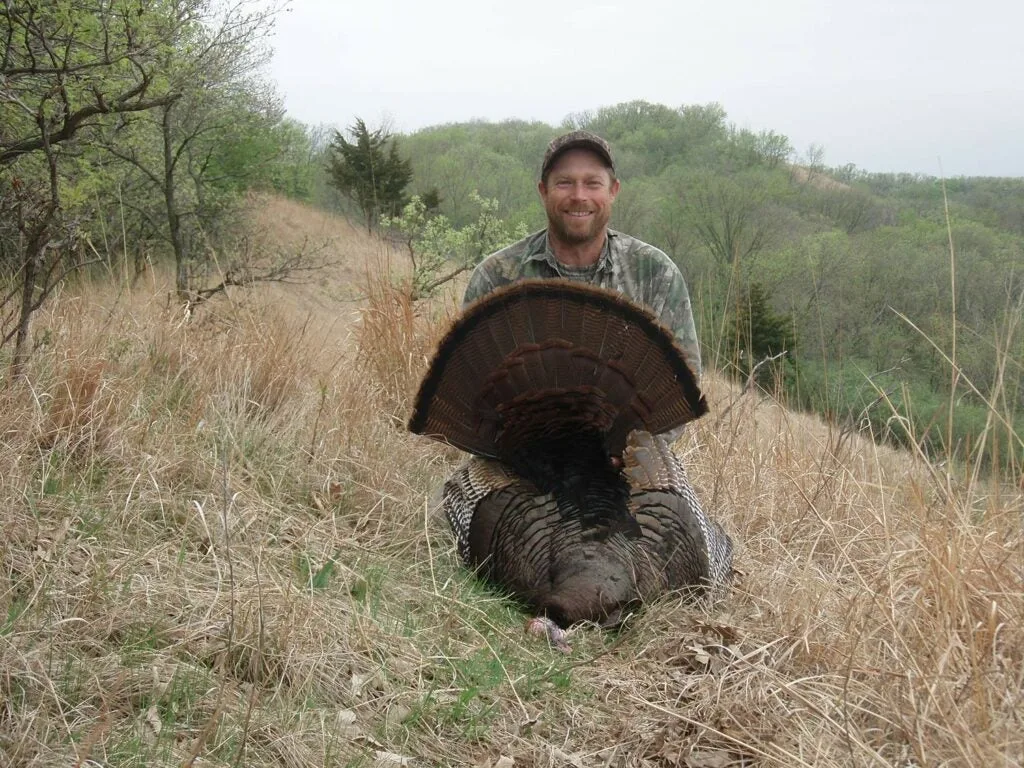
Weddle also pays close attention to see if other hunters are moving closer as he’s calling. As part of that, he actually tries to keep a longbeard as quiet as possible—not encouraging him to gobble—while working the bird.
“It’s taken me many years to become comfortable with this stance, but I no longer feel a compelling need to have that bird answer my calls,” he says. “He’s already told me where he’s at, and I know from experience that he probably isn’t going anywhere else soon, so I try my best to get in the tom’s head by portraying myself as a coy and aloof hen. I do this with gentle calling, and more often than not, answering at the tail end of his gobbles instead of calling to get an answer. I want to live rent-free in his head, and I want him to come looking for me.”
Stay In Shape to Hunt Public Land Turkeys
Because public-land hunting often involves long hikes, difficult terrain or conditions, and extremely long days, experts agree that fitness and effort are paramount to success.
“I cover lots of ground to find birds, and you can’t do that if you’re huffing and puffing after climbing one gentle slope,” says Weddle. “A lot of our public lands include ground that was simply too rugged and steep to be turned into farm ground anyway, and if you want to see what’s way over there on that next ridgeline and beyond, you’ve got to be able to handle the rigors of getting there.”
Owens stays in shape during the off-season and makes sure he’s consuming enough calories and water during physically demanding hunts.
“Being able to hunt them every minute you’re able to is important,” he says. “When you’re tired and fatigued, it’s difficult to do that. When you’re fatigued, your perseverance is going to fall off because you just don’t have it in you. So, if your body’s telling you something, you need to accommodate it.”
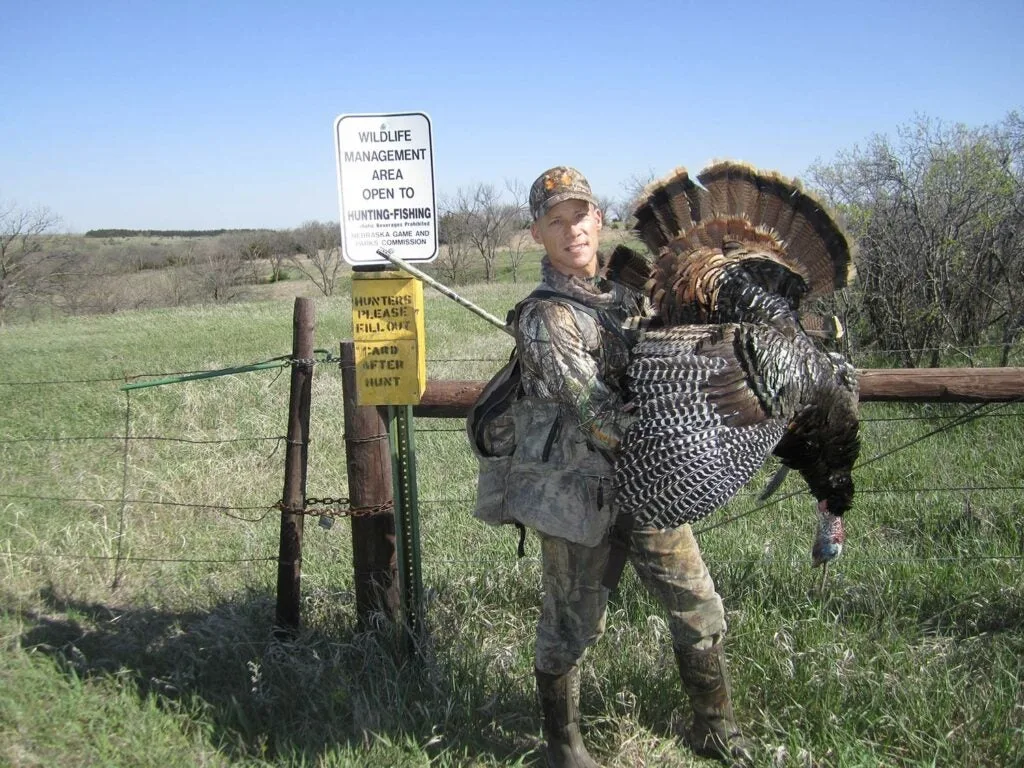
Budz echoes Owens’ thoughts on persistence, urging public-land hunters to use every available minute to pursue birds or gain valuable insights.
“You want to be the first one in the woods and also the last one out of the woods, waiting on that golden minute when they gobble to let hens know they’re there,” says Budz. “Then you can get to that spot early the next morning. And how many guys do you know who are going to stay in the woods all day? Not many. But what’s back at the hotel? Nothing. If I’m not in the woods hunting, I’m driving and scouting.”
One more consideration: Ultimately, you’ll probably encounter other hunters on public property. When that happens, Owens says, just remember the Golden Rule.
“If everybody respects the land and takes care of the land as well as respecting each other, it can be wonderful,” he adds. “The bad taste that people have surrounding public land always comes back to interacting with another person. If every turkey hunter treats other turkey hunters how they want to be treated, things will go smoothly.”
Read Next: The Ultimate Decoy Spread for Pressured Turkeys
Why Hunting Turkeys on Public Land is So Great
Of course, some people might wonder whether hunting public land is worth the extra difficulty. Weddle said the effort is more than worthwhile.
“Public land is owned by us, the human population of this great country, and it’s free to be utilized by us at our whim,” he says. “There is a profound sense of freedom that comes from hunting public land turkeys unlike anything else I know. There’s also a thrill in making that return hike with a big tom slung over your shoulder or in the game pouch of your vest, and a great sense of pride and accomplishment that comes from getting results on land where other people have come up short. I wouldn’t trade the more meager results I get on public land for any opportunity to hunt some private turkey ‘zoo,’ even if I could afford it. The public lands of this country are also some of its most beautiful, and the scenery makes hunting there extra special.”
This spring, don’t fret too much about securing a lease or knocking on doors. Take the advice of Owens, Weddle, and Budz, and chase turkeys at the country’s largest hunting club: state, federal, and other publicly accessible properties.
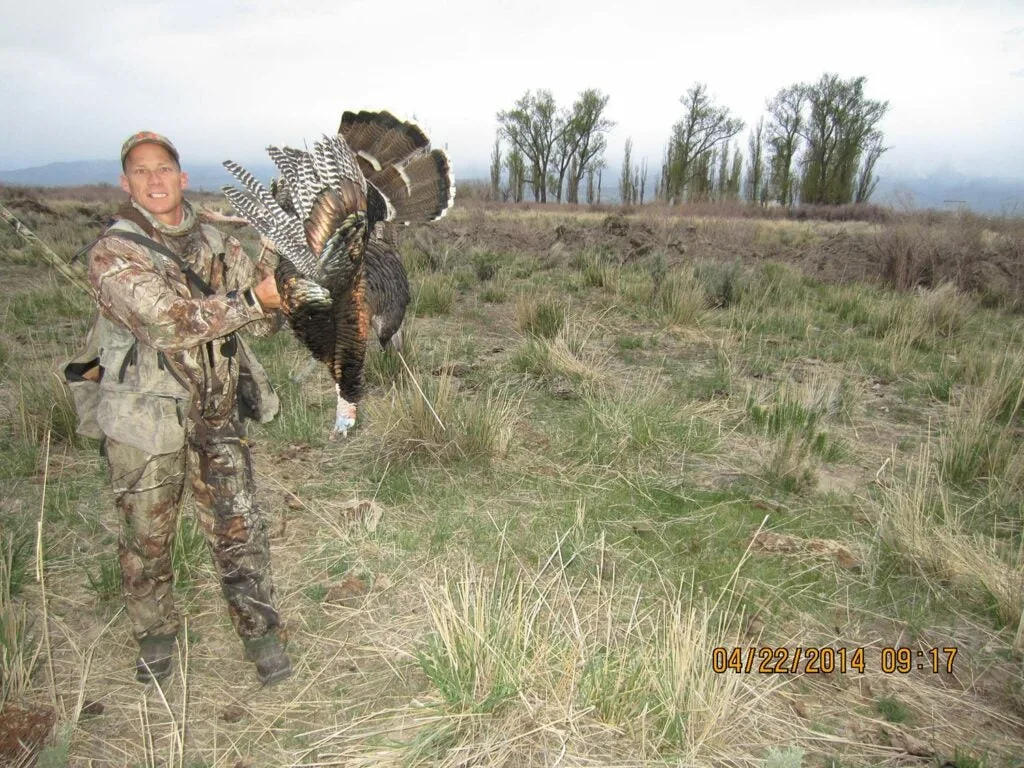
America’s Top Public-Land Turkey Hunting Destinations
Here’s a list of potentially productive public properties across the country, courtesy of state turkey biologists.
Northeast
Connecticut: Cockaponset State Forest, which covers more than 16,000 acres, has a variety of smaller parcels that some hunters might overlook.
Delaware: Division of Fish and Wildlife properties, which are open to turkey hunting only by permit. There’s also a public-lands lottery for Delaware Forest Service lands.
Maine: Public areas in the central or southern portion of the state with upland and field habitat.
Maryland: There are thousands of acres of state forests and wildlife management areas in Garrett, Allegany, and Washington counties. Pocomoke State Forest and the Chesapeake Forestlands also have room to roam.
Massachusetts: State forests and wildlife management areas in the central and western parts of the state.
New York: The New York City Department of Environmental Protection allows hunting on many of its watershed lands in the Hudson Valley and Catskills regions. For listings of NYS DEC- and NYC DEP-managed lands, go to the DEC website.
Pennsylvania: State Game Land properties.
Rhode Island: Arcadia Management Area, which covers 14,000 acres in the southwestern part of the state.
Vermont: The Connecticut River (wildlife management units M and O), White River (wildlife management units J1 and J2), and Lake Champlain (wildlife management units F1, F2, and K) valleys are traditional turkey hunting hotspots.
West Virginia: National forests
Southeast
Alabama: Barbour, Choccolocco, Black Warrior, and James D. Martin-Skyline wildlife management areas.
Arkansas: The Ouachita and Ozark-St. Francis national forests, which comprise almost 2.7 million acres.
Florida: Use the state’s wildlife management area finder.
Georgia: Cohutta and Crockford-Pigeon Mountain wildlife management areas had high harvests and good hunter success rates in 2019.
Kentucky: The Daniel Boone National Forest offers lots of acreage and is open under statewide regulations with no special quota hunts. The Land Between the Lakes is a popular destination. It’s usually a quota hunt, although it was open to everyone in 2020. Check regulations for 2021.
Louisiana: Kisatchie National Forest, in western Louisiana.
Mississippi: Any of the six national forests in the state.
North Carolina: North Carolina game lands throughout the state.
South Carolina: The Webb Wildlife Center Complex in Hampton County, in the coastal plain. Also, the Sumter National Forest, which extends into multiple counties in the piedmont.
Tennessee: Catoosa and Bridgestone/Firestone wildlife management areas.
Virginia: Big Woods, Cavalier, Clinch Mountain, Dick Cross, Gathright, Goshen/Little North Mountain, Thompson, Phelps, Turkeycock, and Fairystone WMAs.
Midwest
Iowa: Iowa Hunter Access Program hunting areas.
Illinois: The Shawnee National Forest, which spans 289,000 acres across nine counties.
Indiana: The Hoosier National Forest, DNR state forests, and reservoir properties in the southern portion of the state.
Kansas: The state has more than 759,000 acres of public access during spring turkey season, including more than 328,000 acres through the Walk-In Hunting Access Program in 2021.
Michigan: Allegan State Game Area, in southwestern Michigan.
Minnesota: The Department of Natural Resources manages about 5.6 million acres of public land. State forests and wildlife management areas provide good opportunities.
Missouri: The state has millions of public acres, including properties owned by the Missouri Department of Conservation, USDA Forest Service, and U.S. Army Corps of Engineers.
Nebraska: Hunters should check out the Nebraska public land atlas.
Ohio: The recently acquired Appalachian Hills Wildlife Area and the Jesse Owens Wildlife Area and State Park in eastern Ohio make up the state’s largest contiguous area of public access.
South Dakota: The Black Hills and state walk-in program properties.
Wisconsin: The state has more than 7 million acres of public land, including state and federal properties. Turkey hunters should also check out the Turkey Hunter Access Program, in which private landowners open their property to spring turkey hunters. The areas are concentrated in the southern and southwestern part of the state, which has fewer public hunting areas.
Northwest
Idaho: Almost 70 percent of Idaho is public. National forest and Bureau of Land Management properties in the Panhandle, Clearwater, Southwest, and Southeast regions offer good hunting.
Montana: Southeastern Montana has many public-land opportunities for turkeys, including national forests, Montana State Trust lands, and Bureau of Land Management properties. Also, Montana FWP’s Block Management Program provides public access to thousands of acres of private lands.
Oregon: National forests and Bureau of Land Management properties. Also, the state has secured access agreements on private land.
Washington: Hunters should check out the state's website for recommended hunting areas.
Wyoming: The Black Hills in Hunt Area 1. Also, there are some public opportunities on national forest land south of Douglas in Hunt Area 2.
Southwest
Arizona: Most of Arizona’s turkey habitat is on public land.
California: Low-elevation national forests and areas along major rivers in the Central Valley.
Colorado: Abundant opportunities—biologists couldn’t pick just one.
Nevada: Most Merriam’s turkey populations are on public lands managed by the Bureau of Land Management or U.S. Fish and Wildlife Service. Some Rio Grande populations are on state wildlife management areas, such as Mason Valley in west-central Nevada and the Overton WMA in southern Nevada.
New Mexico: Merriam’s turkeys are mostly found in New Mexico’s mountain ranges, where land management is primarily through the U.S. Forest Service. Also, the Gila, Santa Fe, and Carson national forests, and the Smokey Bear and Sacramento ranger districts in the Lincoln National Forest, support decent turkey populations.
Oklahoma: Black Kettle National Grassland in western Oklahoma
Texas: Some U.S. Corps of Engineers lands offer season-long hunting with decent numbers of birds.
Utah: Federal lands and walk-in program properties.
Hawaii: Mauna Kea Unit A


